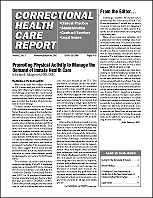Charting Changes in a Pathogen’s Genome Yields Clues About Its Past and Hints About Its Future
Author: Claire Guiant.; Etthel Windels.; Sarah Nadeau.
Source: Volume 23, Number 01, Winter 2022 , pp.5-6(2)

< previous article |next article > |return to table of contents
Abstract:
More than 250 million people worldwide have tested positive for SARS-CoV-2, usually after a diagnostic nose swab. Those swabs aren’t trash once they’ve delivered their positive result, though. For scientists like us they carry additional valuable information about the coronavirus. Leftover material from swabs can help us uncover hidden aspects of the COVID-19 pandemic. Using what are called phylodynamic methods that can track a pathogen’s travels via changes in its genes, researchers are able to pinpoint factors like where and when outbreaks start, the number of undetected infections and common routes of transmission. Phylodynamics can also aid in understanding and tracking the spread of new pathogen variants, such as the recently detected omicron variant of SARS-CoV-2.Keywords: Phylodynamics
Affiliations:
1: Swiss Federal Institute of Technology; 2: SFIT; 3: SFIT.